Answered step by step
Verified Expert Solution
Question
1 Approved Answer
Question: 2. Plot the frequency distribution for demand of the item in Appendix 1 and draw conclusions from what you observe. Thanks in advance for
Question:
2. Plot the frequency distribution for demand of the item in Appendix 1 and draw conclusions from what you observe.
Thanks in advance for your help!
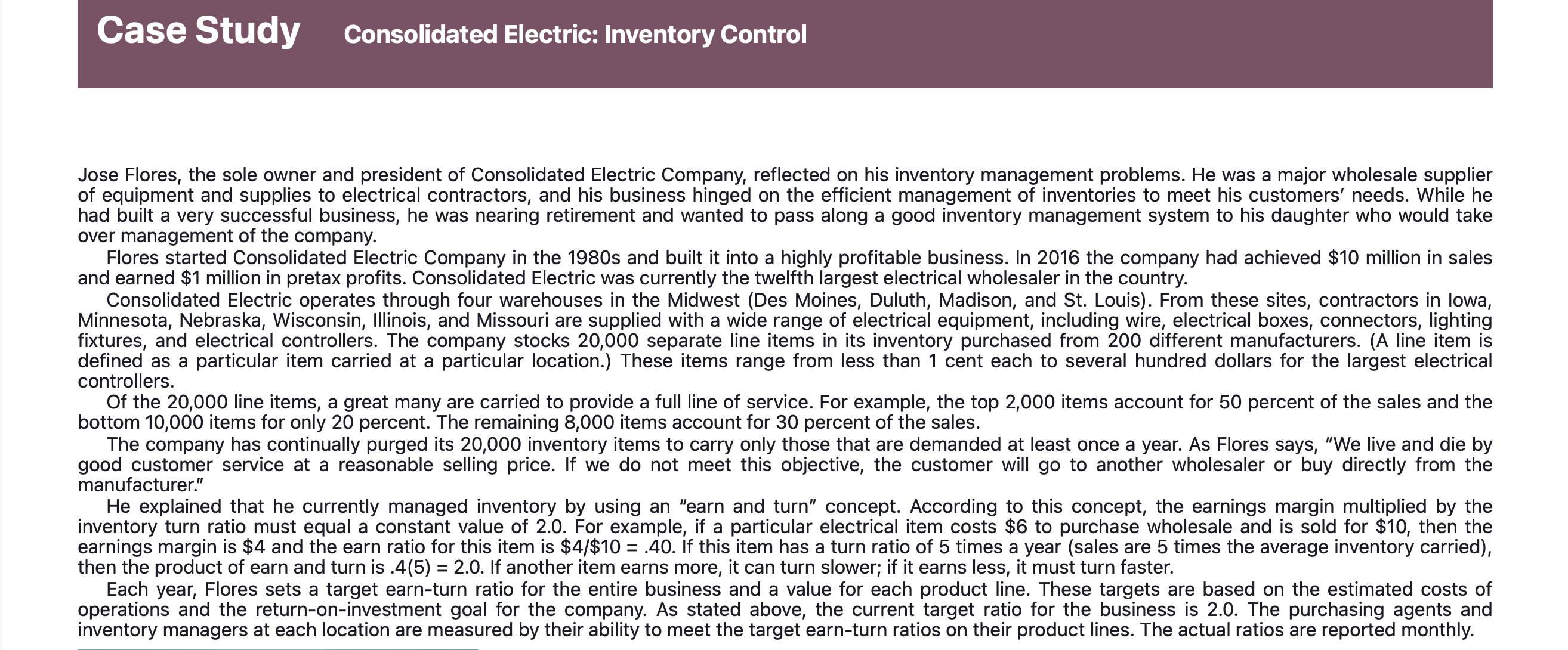
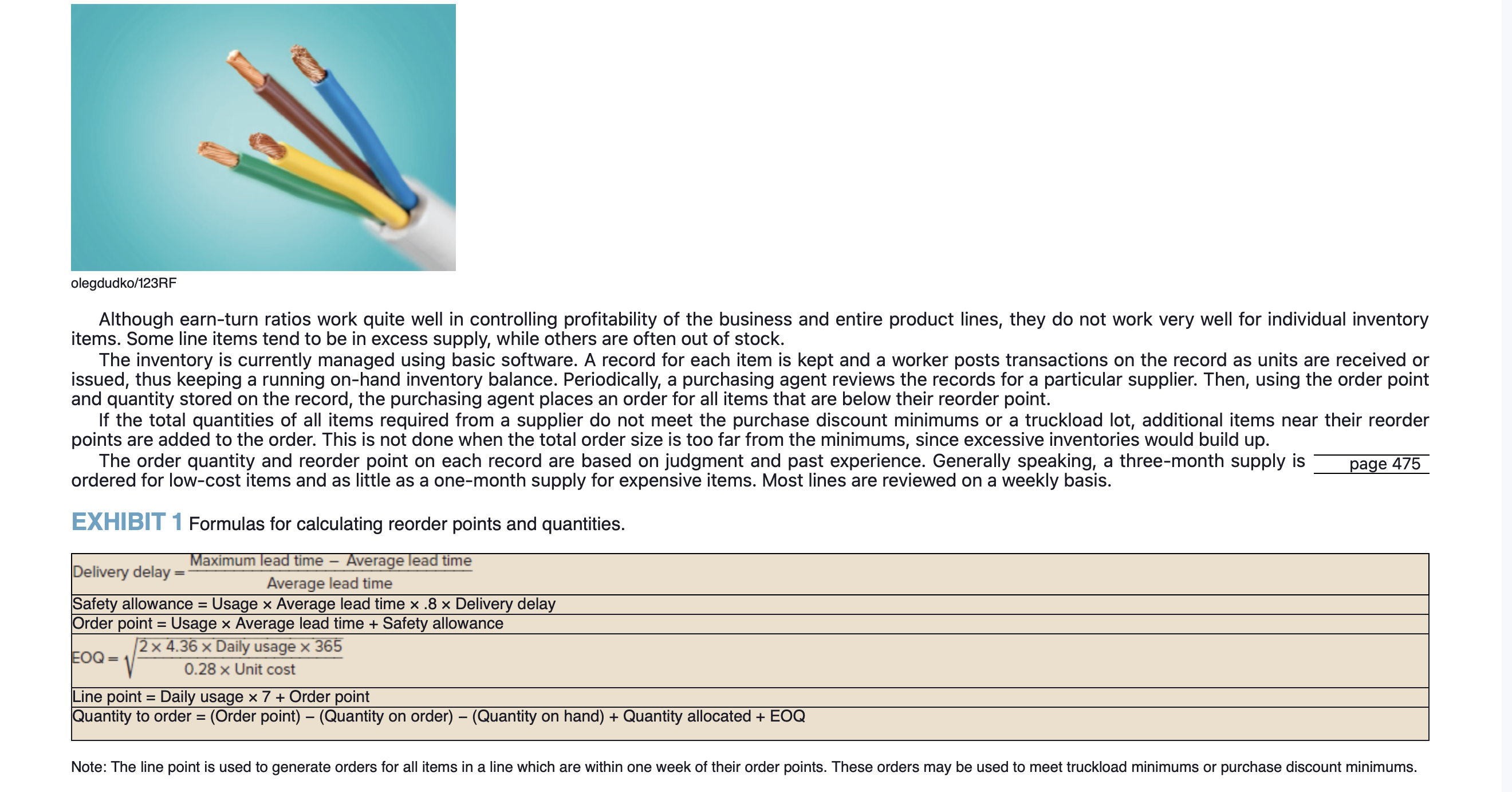

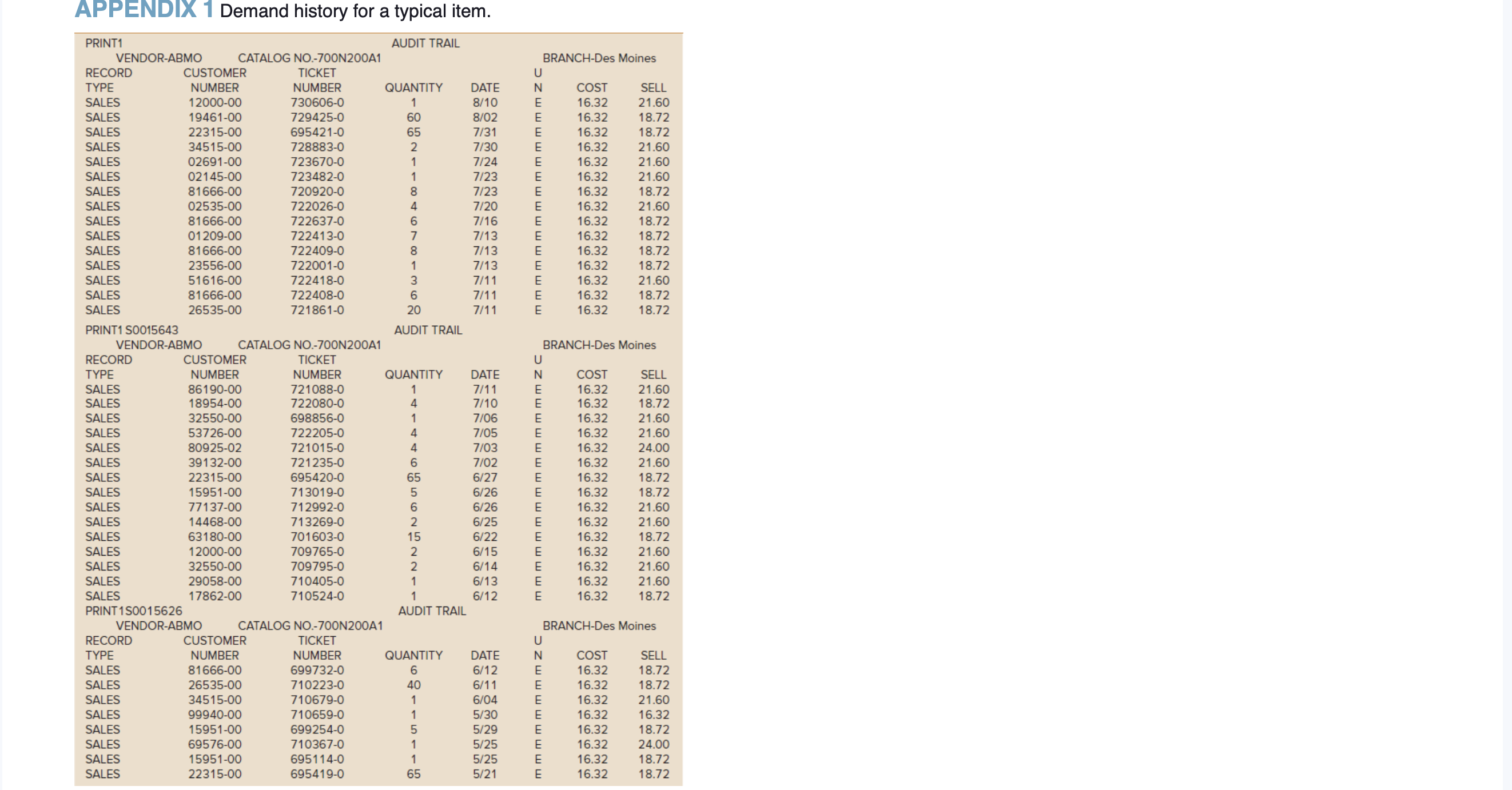
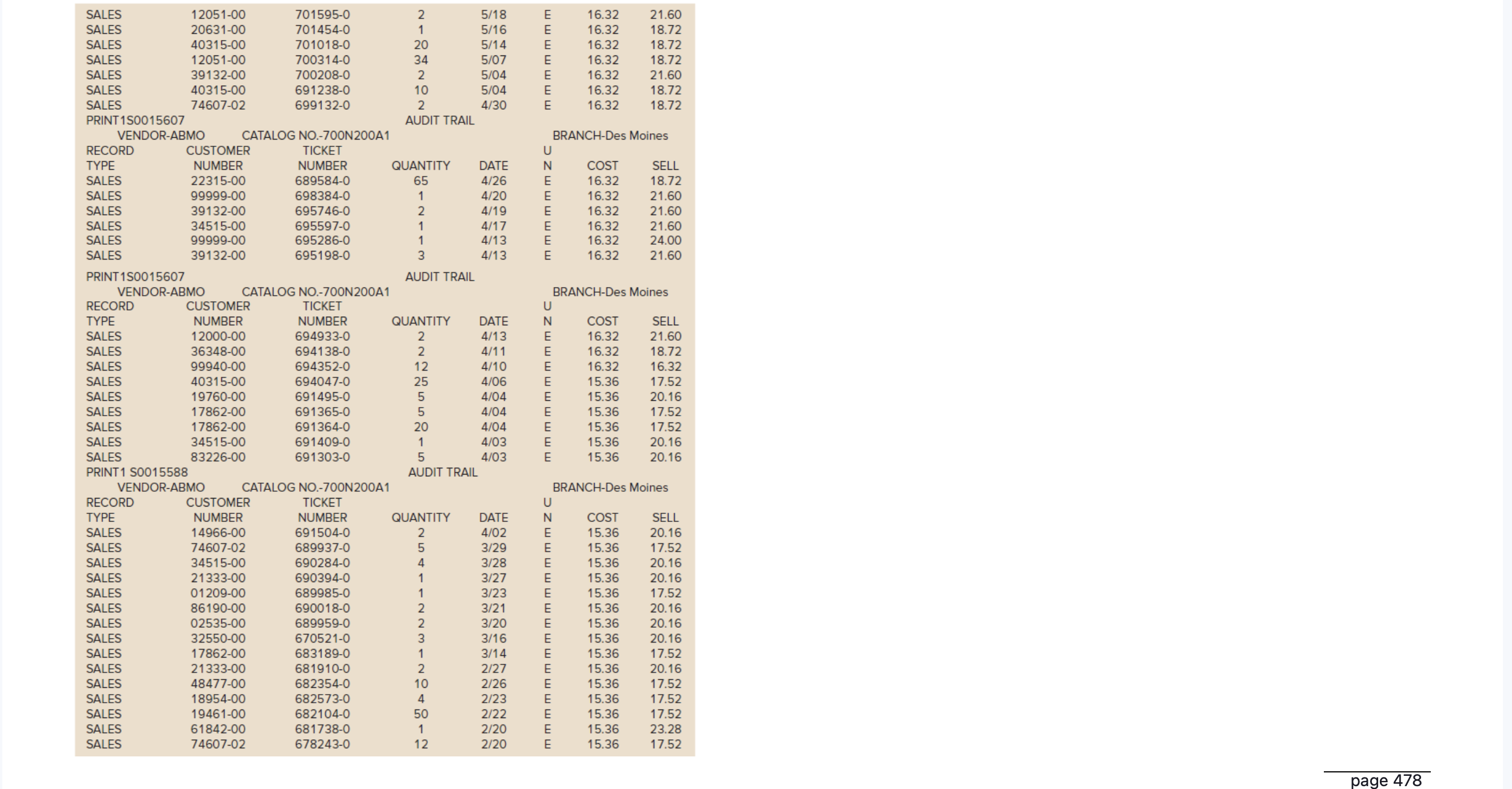
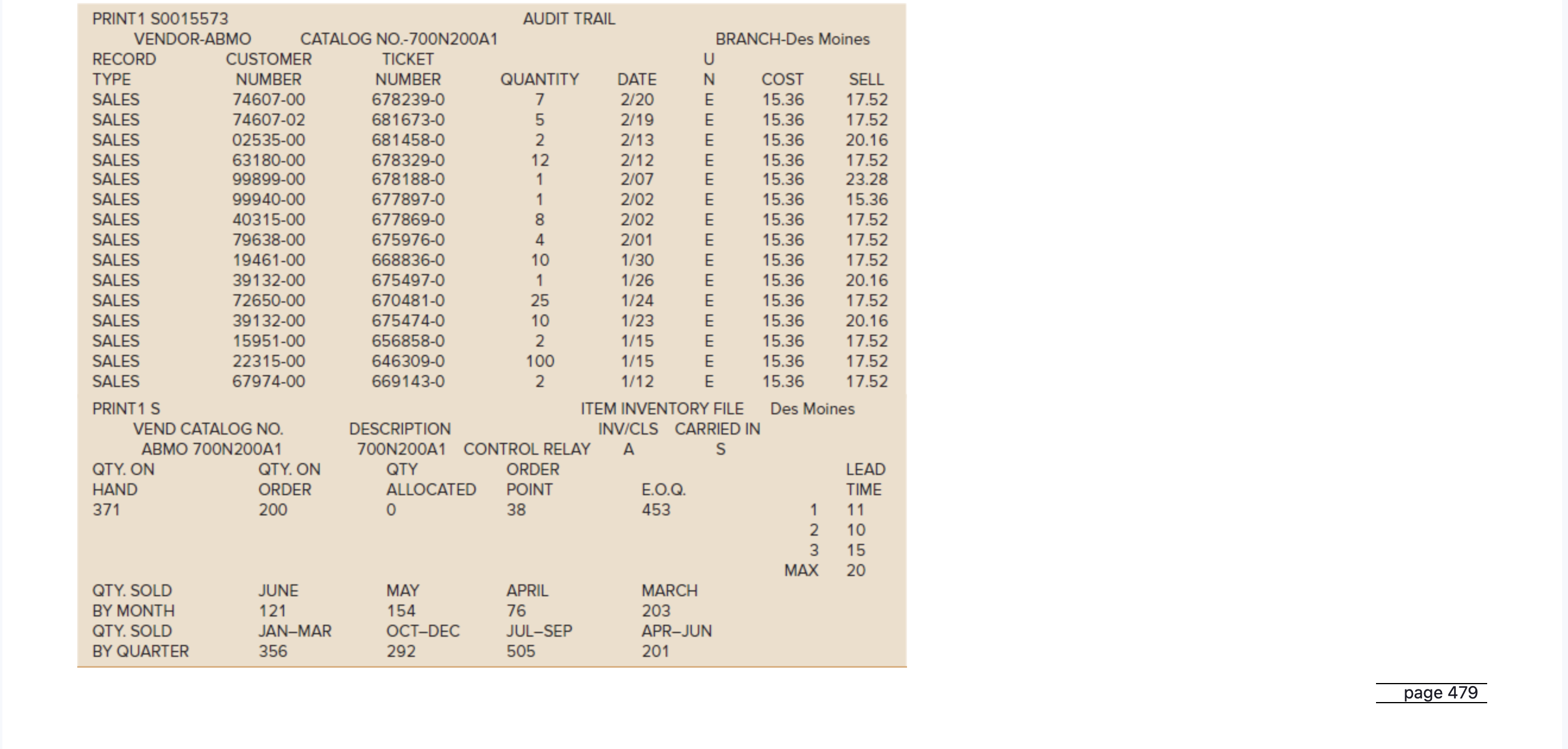
Jose Flores, the sole owner and president of Consolidated Electric Company, reflected on his inventory management problems. He was a major wholesale supplier of equipment and supplies to electrical contractors, and his business hinged on the efficient management of inventories to meet his customers' needs. While he had built a very successful business, he was nearing retirement and wanted to pass along a good inventory management system to his daughter who would take over management of the company. Flores started Consolidated Electric Company in the 1980 s and built it into a highly profitable business. In 2016 the company had achieved $10 million in sales and earned \$1 million in pretax profits. Consolidated Electric was currently the twelfth largest electrical wholesaler in the country. Consolidated Electric operates through four warehouses in the Midwest (Des Moines, Duluth, Madison, and St. Louis). From these sites, contractors in lowa, Minnesota, Nebraska, Wisconsin, Illinois, and Missouri are supplied with a wide range of electrical equipment, including wire, electrical boxes, connectors, lighting fixtures, and electrical controllers. The company stocks 20,000 separate line items in its inventory purchased from 200 different manufacturers. (A line item is defined as a particular item carried at a particular location.) These items range from less than 1 cent each to several hundred dollars for the largest electrical controllers. Of the 20,000 line items, a great many are carried to provide a full line of service. For example, the top 2,000 items account for 50 percent of the sales and the bottom 10,000 items for only 20 percent. The remaining 8,000 items account for 30 percent of the sales. The company has continually purged its 20,000 inventory items to carry only those that are demanded at least once a year. As Flores says, "We live and die by good customer service at a reasonable selling price. If we do not meet this objective, the customer will go to another wholesaler or buy directly from the manufacturer." He explained that he currently managed inventory by using an "earn and turn" concept. According to this concept, the earnings margin multiplied by the inventory turn ratio must equal a constant value of 2.0 . For example, if a particular electrical item costs $6 to purchase wholesale and is sold for $10, then the earnings margin is $4 and the earn ratio for this item is $4/$10=.40. If this item has a turn ratio of 5 times a year (sales are 5 times the average inventory carried), then the product of earn and turn is .4(5)=2.0. If another item earns more, it can turn slower; if it earns less, it must turn faster. Each year, Flores sets a target earn-turn ratio for the entire business and a value for each product line. These targets are based on the estimated costs of operations and the return-on-investment goal for the company. As stated above, the current target ratio for the business is 2.0 . The purchasing agents and inventory managers at each location are measured by their ability to meet the target earn-turn ratios on their product lines. The actual ratios are reported monthly. Although earn-turn ratios work quite well in controlling profitability of the business and entire product lines, they do not work very well for individual inventory items. Some line items tend to be in excess supply, while others are often out of stock. The inventory is currently managed using basic software. A record for each item is kept and a worker posts transactions on the record as units are received or issued, thus keeping a running on-hand inventory balance. Periodically, a purchasing agent reviews the records for a particular supplier. Then, using the order point and quantity stored on the record, the purchasing agent places an order for all items that are below their reorder point. If the total quantities of all items required from a supplier do not meet the purchase discount minimums or a truckload lot, additional items near their reorder points are added to the order. This is not done when the total order size is too far from the minimums, since excessive inventories would build up. The order quantity and reorder point on each record are based on judgment and past experience. Generally speaking, a three-month supply is page 475 ordered for low-cost items and as little as a one-month supply for expensive items. Most lines are reviewed on a weekly basis. EXHIBIT 1 Formulas for calculating reorder points and quantities. Consolidated Electric had been converting its inventory records to a new software system. At the present time, an on-hand balance is maintained and an accurate history of all orders placed, receipts, and issues is kept. A demand history for a typical item is shown in Appendix 1. Flores was anxious to utilize the new system to calculate reorder points and order quantities, but he was unsure of the exact formulas to use. Using standard textbooks in the inventory field, he developed the formulas given in Exhibit 1 . The EOQ formula utilizes a carrying cost of 28 percent and an ordering cost of $4.36 per order placed. These figures were based on past cost history at the company. The formulas were tested on a pilot basis. For some items the formulas seemed to work quite well, but for others they resulted in drastic departures from current practice and from common sense. For example, on one electrical box, the formulas would have ordered a two-year supply. Flores wanted to start using the new software as soon as possible, but he was not sure that the formulas would work properly. He wondered whether the formulas would meet the customer-service objectives of the business. Would they take advantage of truckload lots or purchase discounts whenever appropriate, and would the formulas result in reasonable inventory levels? Discussion Questions 1. Review the demand data provided in Appendix 1. Describe any patterns, outliers, or unusual customers that you see represented in the data. 2. Plot the frequency distribution for demand of the item in Appendix 1 and draw conclusions from what you observe. 3. Is a P System or a Q System more appropriate for this item? Explain. What formulas are needed for your suggested system, and how do they compare to the formulas currently being used? 4. Design an inventory control system for this business, based on your suggestion in question 3 . 5. What customer-service objectives are reasonable for this business? This case was prepared by Roger G. Schroeder for class discussion. Copyright @ by Roger G. Schroeder, 2016, 2019. All rights are reserved. Reprinted with permission. page 476 APPENDIX 1 Demand history for a typical item. page 479
Step by Step Solution
There are 3 Steps involved in it
Step: 1

Get Instant Access to Expert-Tailored Solutions
See step-by-step solutions with expert insights and AI powered tools for academic success
Step: 2

Step: 3

Ace Your Homework with AI
Get the answers you need in no time with our AI-driven, step-by-step assistance
Get Started


